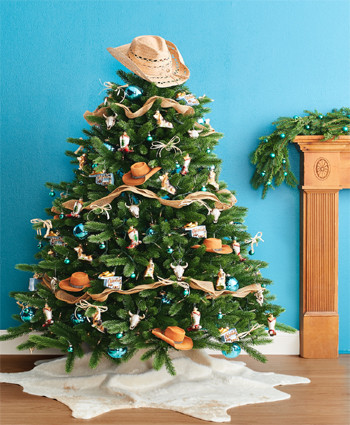Christmas trees brighten the season

Decked out in tinsel, lights, ornaments, and garland, Christmas trees are enduring symbols of the holiday season that boast a rich history.
Evergreen trees have been used to celebrate winter festivals for thousands of years, and eventually became associated with Christianity. Plants and trees that remained green all year held special meaning to ancient peoples, and were purported to keep away illness and evil spirits.
Germans were credited with tying evergreen trees to Christmas celebrations. In the sixteenth century, devout Christians brought decorated trees into their homes. Martin Luther, the Protestant reformer, is believed to have first added lighted candles to these trees after he was inspired by twinkling stars in the night sky.
While early Americans found Christmas trees an oddity, the tradition, brought over by German settlers, eventually caught on. Today, between 25 and 30 million natural Christmas trees are sold in the United States each year, states the National Christmas Tree Association. Trees are grown in all 50 states and Canada.
The following is a look at some popular tree varieties.
Living Christmas trees
Living Christmas tree, which refers to those with their roots still intact, are popular among eco-conscious holiday enthusiasts. That’s because living trees can be promptly planted after they’ve served their purpose indoors.
Opt for a moderately sized tree, as root balls on larger trees can be heavy and difficult to move. Living trees can typically be kept indoors for around seven to 10 days before they will need to be returned outside. Move such trees to a sheltered outdoor area for one to two weeks so they can reacclimate to the climate. So long as the ground is not frozen, trees can then be planted when the reacclimation period ends. Better Homes and Gardens suggests selecting a mild day to plant the tree.
Fraser fir
Fraser fir trees are typically uniformly pyramidshaped trees that have strong branches that turn slightly upward. These trees have good needle retention and a dark, blue-green hue. Many people feel these trees have a pleasant scent. Because they are such a quintessential Christmas tree, Fraser fir, as well as their close cousin, Balsam fir, tend to be more expensive than others.
Scotch pine
One of the advantages of Scotch pine trees is their needle retention. Experts say Scotch pine needles will not drop off even if the tree is dry. Scotch pine is an introduced species brought to North America by European settlers, and it’s known for dark green foliage and sturdy, stiff branches. The Scotch pine is one of the most popular Christmas trees today.
White spruce
As a Christmas tree, the white spruce is known for excellent foliage color, short stiff needles and good needle retention. The blue-green color is pleasant, but when needles are crushed, the tree doesn’t produce a favorable evergreen aroma. White spruce trees keeps their needles longer than other spruces.
With proper care, any variety of Christmas tree can look beautiful throughout the holiday season.

